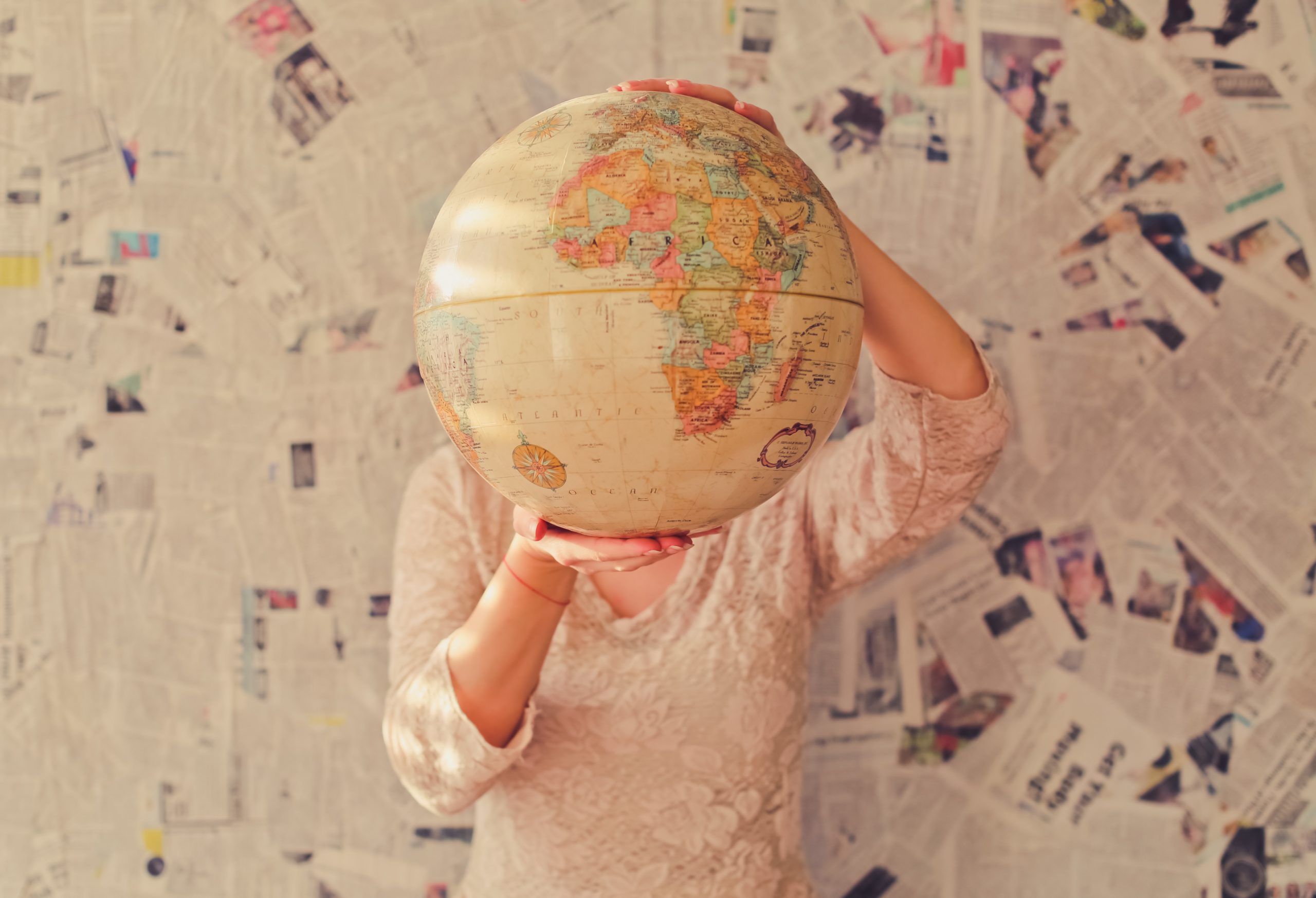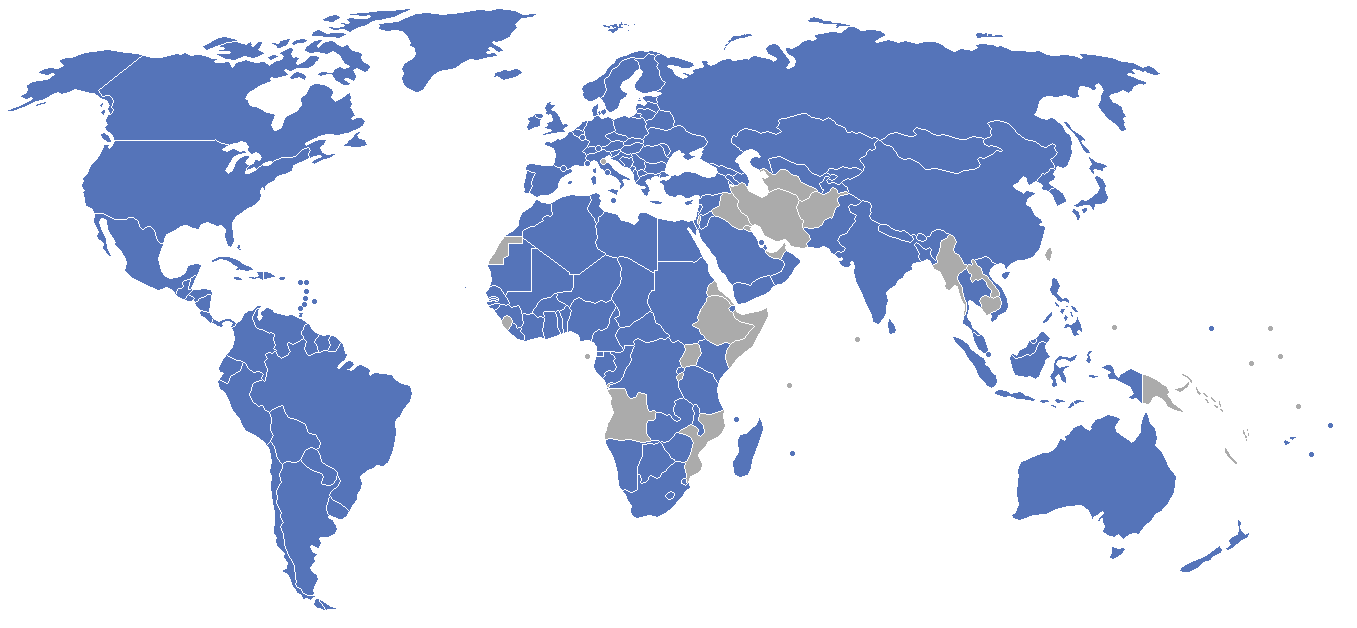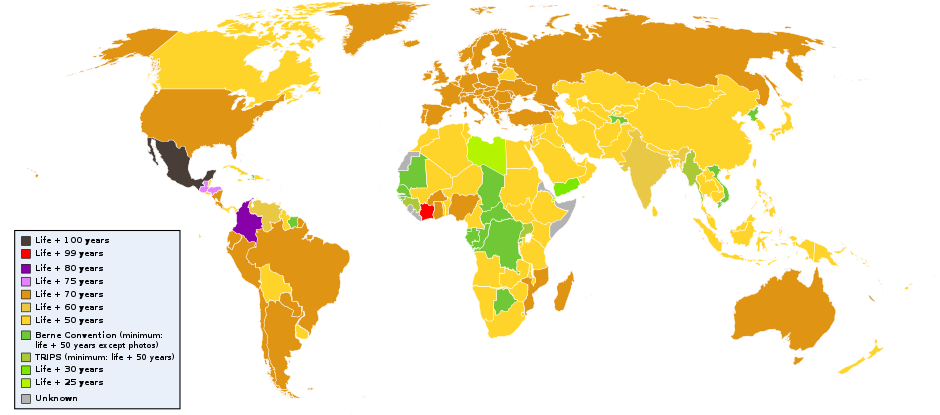Copyright Law
7
Introduction
Copyright laws vary from country to country, yet we operate in a world where media is global. Over time, there has been an effort to standardize copyright laws around the globe.

Learning Objectives
- Learn how the copyright laws of your country may differ from those of other countries
- Identify major international treaties and efforts to harmonize laws around the world
Big Question – Why it Matters
Although copyright laws differ country to country, the internet has made global distribution and sharing of copyrightable works possible with the click of a button. What does that mean for you, when you share your works on the internet and use works published by others outside your country? What law applies to a video taken by someone from India during their travels to Kenya and then posted to YouTube? What about when that video is watched or downloaded by someone in Canada?
Copyright law is locally implemented by every country around the world. In an effort to minimize complexity, efforts have been undertaken to harmonize some of the basic elements of how copyright works across the globe.
Personal Reflection – Why it Matters to You
When you publish or reuse something online, have you ever thought about what law applies to you? Does it make sense to you that different people should have different limits to what they can do with your work based on their geographic location? Why or why not?
Acquiring Essential Knowledge
Introduction to the Global Copyright System
International laws
Every country has its own copyright laws, but over the years there has been extensive global harmonization of copyright laws through treaties and multilateral and bilateral trade agreements. These treaties and agreements establish minimum standards for all participating countries, which then enact or conform their own laws to the agreed-upon limits. This system leaves room for local variation.
These treaties and agreements are negotiated in various fora: the World Intellectual Property Organization (known as “WIPO”), the World Trade Organization (known as the WTO), and in private negotiations between select countries.
One of the most significant international agreements is the Berne Convention for the Protection of Literary and Artistic Works, concluded in 1886. The Berne Convention has since been revised and amended on several occasions. WIPO serves as administrator of the treaty and its revisions and amendments, and is the depository for official instruments of accession and ratification. Today, more than 176 countries (as of March 2, 2018) have signed the Berne Convention. This treaty (as amended and revised) lays out several fundamental principles upon which all participating countries have agreed. One of those principles is that copyright must be granted automatically – that is, there must be no legal formalities required to obtain copyright protection (for example, national laws of its signatories cannot require you to register or pay for your copyright as a condition to receiving copyright protection). In general, the Berne Convention as revised and amended also requires that all countries give foreign works the same protection they give works created within their borders, assuming the other country is a signatory. Below is a map showing (in blue) the signatories to the Berne Convention as of 2012.

Additionally, the Berne Convention sets minimum standards – default rules – for the duration of copyright protection for creative works, though some exceptions exist depending on the subject matter. The Berne Convention’s standards for copyright protection dictates a minimum term of life of the author plus 50 years. Because the Berne Convention sets minimums only, several countries have established longer terms of copyright for individual creators, such as “life of the author plus 70 years” and “life of the author plus 100 years.” Review the Wikipedia article on copyright term, and view the page that lists the duration of copyright based on country. The map below shows the status of copyright duration around the world as of 2012.

In addition to the Berne Convention, several other international agreements have further harmonized copyright rules around the world.
International agreements include the Agreement on Trade-Related Aspects of Intellectual Property Rights (TRIPS)—negotiated by members of the World Trade Organization in 1994, and the WIPO Copyright Treaty (WCT)—negotiated by members of the World Intellectual Property Organization in 1996. These agreements address similar issues and also new IP-related issues not covered by the Berne Convention.
Another manner in which copyright policy is made is through bilateral and multilateral trade agreements. As of 2017, there are several negotiations underway. These include the Trans-Pacific Partnership (TPP), the Regional Comprehensive Economic Partnership (RCEP), and the renegotiation of the North American Free Trade Agreement (NAFTA). A major drawback of multilateral trade negotiations is that they are typically conducted in secret with little or no participation from civil society organizations and the public.
National laws
Although an international framework exists because of the Berne Convention and other treaties and agreements, copyright law is enacted and enforced through national laws. Those laws are supported by national copyright offices, which in turn support copyright holders, allow for registration, and provide interpretative guidance. As mentioned, while there has been a major effort to create minimum standards for copyright across the globe, countries still have a significant amount of discretion as to how they meet the requirements imposed by treaties and agreements. That means the details of copyright law still vary quite a bit from country to country.
What law applies to my use of a work restricted by copyright?
A common question of copyright creators and users of their works is which copyright law applies to a particular use of a particular work. Generally, the rule of territoriality applies: national laws are limited in their reach to activities taking place within the country. This also means that generally speaking, the law of the country where a work is used applies to that particular use. If you are distributing a book in a particular country, then the law of the country where you are distributing the book generally applies.
This is true even in the era of the internet, though much harder to apply. For example, if you are a Canadian citizen traveling to Germany and using a copyrighted work in your PowerPoint presentation, then German copyright law normally applies to your use.
It can be complicated to determine which law applies in any given case. This complexity is one of the benefits of Creative Commons licenses, which are designed to be enforceable everywhere.
Final remarks
Even though global copyright treaties and agreements exist, there is no one “international copyright law.” Different countries have different standards for what is protected by copyright, how long copyright lasts and what it restricts, and what penalties apply when it is infringed.

